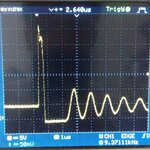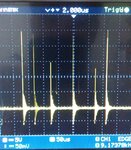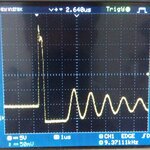baby_2
Advanced Member level 4
Hi,
I want to get a 5volt 1A with using Lm2756-5V. I assembled a circuit according to datasheet schematic.

I use:
input voltage 30volt
SS34 as D1
470uf Cap
inductor 100uH(with 1.6A)
But I can't get more than 200mA, and When I attach a load to output of LM2576 it voltage drops less than 4 volt.I change Capacitor to 2200uf and inductor 220uH (with 2A) and also I have added a Diode(1N4007) as you can see in blue but it dosen't work well.
when I drive output with a 10ohm resistor to get .5A output my LM2576 burns suddenly and it's output get equal value to it's input voltage.( I have burned 6 Lm2576 with different components)
what is my mistake? ( I have bought different kind of LM2576 (Onsemi , National semiconductor))
I want to get a 5volt 1A with using Lm2756-5V. I assembled a circuit according to datasheet schematic.

I use:
input voltage 30volt
SS34 as D1
470uf Cap
inductor 100uH(with 1.6A)
But I can't get more than 200mA, and When I attach a load to output of LM2576 it voltage drops less than 4 volt.I change Capacitor to 2200uf and inductor 220uH (with 2A) and also I have added a Diode(1N4007) as you can see in blue but it dosen't work well.
when I drive output with a 10ohm resistor to get .5A output my LM2576 burns suddenly and it's output get equal value to it's input voltage.( I have burned 6 Lm2576 with different components)
what is my mistake? ( I have bought different kind of LM2576 (Onsemi , National semiconductor))


